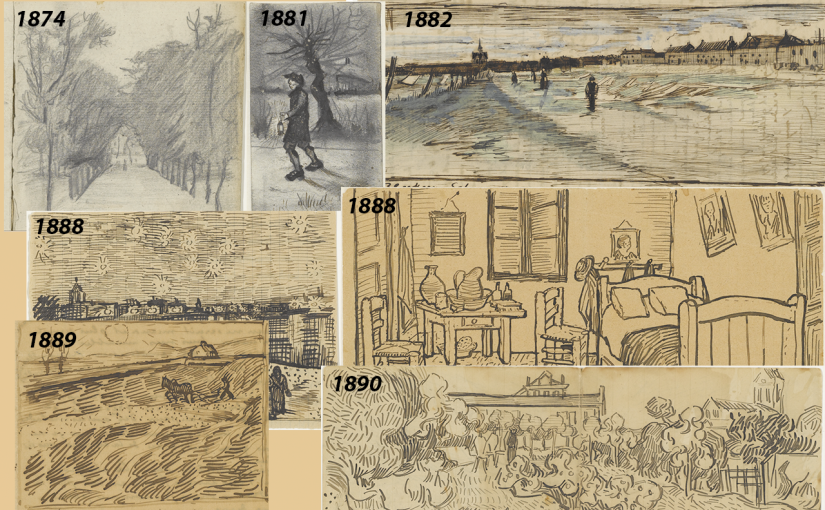“In his letters Van Gogh often gave extensive reports on his working methods, and so we are well informed about the practical side of his craftsmanship: from the way he experimented with colour and chose his materials to his use of all sorts of tools. From his letters and technical investigation it also emerges that Van Gogh worked in a highly systematic and well-considered manner: every drawing and every painting was a conscious attempt to make headway. This is contrary to the prevalent image of Van Gogh as an impulsive and purely emotional artist” – Description from Van Gogh Museum
Among many other things, Van Gogh is famous for his energetic brush strokes, with thick paint and short strokes, a technique called impasto. He was seeking a new technique to express emotions, not by facial expressions or anything else traditionally used in academic painting, but by brush strokes. This search for a new technique started in Paris in 1886-1887, and the progression manifests in the sketches he made in his letters over the years (the collage, all taken from vangoghletters.org).
In his own words (Letter to Theo van Gogh, 23 or 24 Aug 1888.): “And I must tell you that these days I’m making a great effort to find a way of using the brush without stippling or anything else, nothing but a varied brushstroke. But you’ll see, one day.”
His innovative use of brushstroke was described as “fiery, very powerful and full of tension”, and his style as “vigorous, exalted, brutal, intense”, in an article by Albert Aurier in 1890. “In his article Aurier praises Van Gogh’s ‘strange, intense and feverish work’ (oeuvres étranges, intensives et fiévreuses) and calls him a worthy successor to the seventeenth-century Dutch masters.”
To this praise, van Gogh wrote:
“But when I read the article it made me almost sad as I thought: should be like this and I feel so inferior. And pride intoxicates like drink, when one is praised and has drunk one becomes sad, or anyway I don’t know how to say how I feel it, but it seems to me that the best work one could do would be that carried out in the family home without self-praise. And then among artists, people’s friendly dispositions aren’t always enough. Either someone’s qualities are exaggerated or he’s over-neglected. However, I very much want to believe that basically Justice is in better health than it appears to be. ” – Letter to his sister Willemiem van Gogh, 19 Feb 1890
“Every portrait that is painted with feeling is a portrait of the artist, not of the sitter.” – Oscar Wilde
